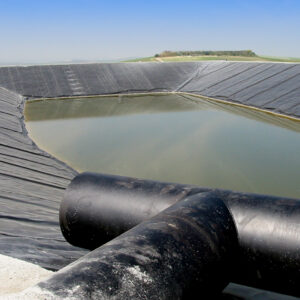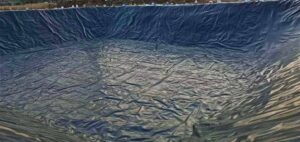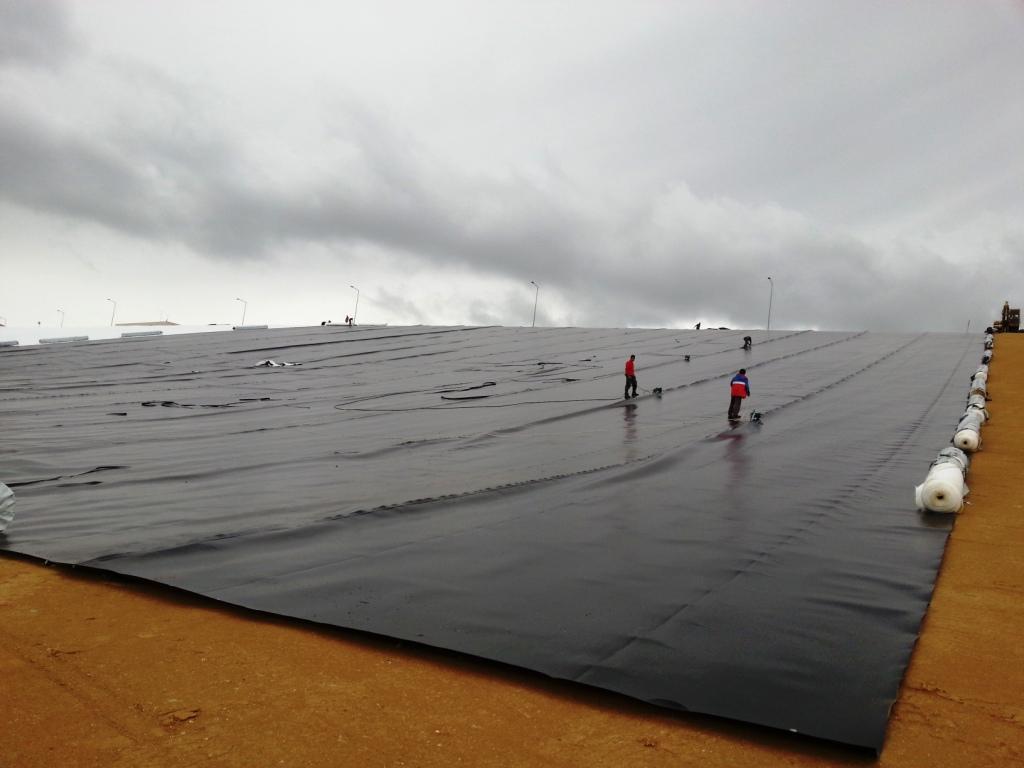Is 2mm geomembrane suitable for fish farming?
The use of 2mm geomembranes for fish farming may not be a common practice, as such membranes are usually used to prevent seepage and protect soil or bottom structures, rather than as part of the fish ecosystem in the water body. Fish farming requires some specific environmental and management conditions, which are generally not provided by geomembranes. Here are some things to note about raising fish on geomembranes:
Water quality management: Fish farming requires regular monitoring and management of water quality, including water temperature, oxygen content, ammonia nitrogen, nitrate and other parameters. The geomembrane itself does not provide these conditions, you need to ensure that the water quality of the fish pond or water body is suitable.
Ecosystem needs: Fish require appropriate habitat and food sources. Geomembranes generally do not provide these conditions. You need to make sure that the water body where you keep your fish has enough aquatic plants and other organisms to support the fish.
Bottom structure: Fish ponds usually need to have an appropriate bottom structure to support the life of fish, such as sand, mud, stones, etc. Geomembranes do not necessarily provide this base structure.
Water depth and volume: Fish need enough water depth and space to swim and live. Geomembranes may limit the depth and volume of water bodies.
Fish species: Different species of fish have different requirements for the water environment. You need to choose a fish species that is suitable for your water body, taking into account water temperature, pH and other factors.
If you plan to raise fish on a geomembrane, it is recommended to work with a professional aquaculture expert or water ecologist to ensure that the appropriate environmental conditions and management practices are provided to maintain the survival and health of the fish. Fish farming is a complex task that requires careful planning and management to ensure success.

What thickness is required for geomembrane fish farming?
The thickness of the geomembrane is a key factor in fish farming applications and needs to be selected based on the specific fish farming environment and needs. Generally speaking, the thickness of geomembrane is usually between 0.5 millimeters (mm) and 2 millimeters (mm). However, in fish farming scenarios, it is recommended to choose a thicker geomembrane to ensure better durability and impermeability.
Here are the factors to consider when choosing geomembrane thickness:
Impermeability and durability: Thicker geomembranes generally have better impermeability and durability, and are better able to prevent water seepage and chemicals in the soil from infiltrating.
Puncture resistance: In a fish farming environment, there may be puncture problems caused by sharp objects or fish. Thicker geomembranes provide better puncture resistance.
Environmental requirements: Different species of fish have different requirements for water quality and environmental conditions. Depending on the fish you choose, a thicker geomembrane may be required to meet specific water quality and environmental requirements.
Installation environment: If the bottom of the fish pond or the surrounding surface is uneven, a thicker geomembrane can better adapt to the surface irregularities and reduce the risk of damage to the membrane.
Budget: Thicker geomembranes generally cost more. You need to choose the appropriate thickness based on your budget while ensuring quality.
Taking these factors into consideration, for the application of geomembrane fish farming, it is usually recommended to choose a geomembrane with a thickness between 0.75 millimeters (mm) and 1.5 millimeters (mm). However, to ensure optimal performance, it is best to consult a professional geomembrane supplier or engineer when selecting geomembrane thickness so that you can make an informed decision based on your specific situation.

What are the benefits of a thicker geomembrane?
There are several potential benefits to using thicker geomembranes, especially in applications that require strong impermeability, durability, and puncture resistance. Here are some potential benefits of using thicker geomembranes:
Better impermeability: Thicker geomembranes usually have higher impermeability and can better prevent the penetration of water, liquid or gas, thereby effectively protecting the soil and underlying structure.
Greater durability: Thicker geomembranes are generally more durable and have a longer service life. This means they are able to maintain their performance for a longer period of time, reducing the frequency of maintenance and replacement.
Better puncture resistance: In some applications there may be a risk of puncture, for example in the presence of rocks or sharp objects. Thicker geomembranes have better puncture resistance and are better able to withstand these risks.
Accommodates Irregular Surfaces: Thicker geomembranes can better conform to irregular surfaces or terrains, which is especially important for applications covering uneven bases or surrounding ground surfaces.
Better environmental adaptability: Thicker geomembranes can work in a wider temperature range and adapt to more different meteorological conditions and environmental factors.
Reduced Maintenance Costs: Since thicker geomembranes have a longer lifespan and better performance, they may reduce maintenance costs because they won’t require frequent replacement or repairs.
While thicker geomembranes have clear advantages in some aspects, they are also generally more expensive, and thicker membrane materials can be heavier, making installation more challenging. Therefore, when selecting a geomembrane, application requirements, budget, and other factors need to be considered to ensure the most appropriate thickness is selected. It is best to consult a geomembrane supplier or engineer for application-specific advice.
Author
-

Founded in 2002, Tinhy's team focuses on the manufacturing, marketing, installation, application and research and development of geosynthetic materials.
View all posts




